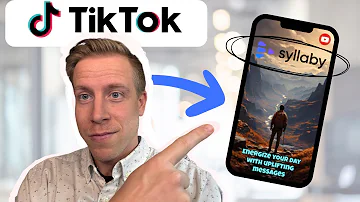How to Build AI Agents Faster with AgentKit: A Step-by-Step Demo
Introduction: Accelerating AI Agent Development with AgentKit
In today’s fast-paced tech landscape, deploying AI agents quickly and efficiently has become essential for developers. The recent OpenAI AgentKit Demo by Christina Huang provides a clear example of how AgentKit can revolutionize agent creation — enabling rapid development, robust workflows, and seamless integration into existing web platforms. Whether you’re looking to enhance user experience or streamline internal tools, understanding the AgentKit workflow will put you ahead of the curve.
AgentKit gives developers the power to create, test, and deploy AI-powered agents in just minutes, with minimal code.
In this article, we’ll break down the video into actionable insights, highlight key moments from the demo, and provide you with professional, SEO-optimized tips for elevating your own AI workflows.
What is AgentKit? Core Features and Value Proposition
AgentKit is an OpenAI platform tool designed for developers aiming to create AI agents in record time — without complex coding.
Key Benefits of Using AgentKit
- Visual Workflow Builder: Design complex agent logic visually with drag-and-drop nodes.
- Reusable Building Blocks: Leverage pre-built tools like File Search and security guardrails.
- Out-of-the-Box Security: Quickly integrate guardrails for PII protection, moderation, and reliability.
- Custom Widgets: Enhance user experience with interactive and on-brand widgets.
- Effortless Embedding: Directly deploy your AI agents into any web application.
“AgentKit helps developers create agents faster than ever before.” — Christina Huang
Step-by-Step Tutorial: Building & Embedding an AI Agent (Demo Timeline)
The video is structured as a live challenge — building and deploying an agent in just 8 minutes. Here’s how Christina approached the process:
1. Initialize Your Project (0:30)
- Access the OpenAI Workflow Builder
- Set a timer to simulate real-world constraints
- Start by planning agent responsibilities
2. Craft Your Main Workflow (1:10)
- Visual Design: Use the visual Workflow Builder to lay out logic
- Node Identification: Drag key nodes (e.g., categorization, routing)
Key Components:
- Categorizing Agent: Routes session-specific vs. general queries
- If/Else Logic: Directs requests to the appropriate sub-agent
3. Add Specialized Agents (2:20 – 5:00)
- Session Agent: Returns event schedule information
- Attach relevant documents (e.g., session details file)
- Connect to custom widgets for visualized output
- Dev Day Information Agent: Handles broader, event-wide questions
- Feed with general event documentation
- Assign a unique, branded tone (e.g., Froge theme)
4. Create and Attach Custom Widgets (5:00 – 6:00)
- Widget Gallery: Browse or import pre-built widgets
- Onboarding Session Widget: Example used for Froj’s onboarding session
- Preview Feature: Ensure the user experience aligns visually
5. Implement Security Guardrails (6:00 – 7:00)
- Rapidly integrate pre-built guardrails for PII and moderation
- Place security nodes at workflow start
- Practice principle of least privilege in agent permissions
- Add error-handling agents for sensitive data queries
Tip: Guardrails are critical for production AI. Use AgentKit’s built-ins for easy compliance.
6. Final Testing and Evals (7:00 – 8:00)
- Agent Preview: Simulate user queries in real-time
- Watch workflow traversal (guardrail → categorize → fetch info → output widget)
- Tweak workflow or widget as needed
7. Deploy and Embed (8:00 – End)
- One-Click Publish: Move agent from test to production instantly
- Obtain Workflow ID for easy reference
- Embed with ChatKit: Insert the React component with your workflow and API keys
- Customize UI: for branding, prompts, and triggers
Actionable Tips: Best Practices Using AgentKit
Design for Modularity
- Split responsibilities between specialized agents (session info, general info, error/guardrails)
- Use if/else logic to maintain clean, scalable workflows
Leverage Pre-Built Assets
- Adopt widgets from the gallery to accelerate development
- Reuse proven guardrails to reduce security risks
Personalize the Experience
- Brand your agent’s style and language for your audience (see: Froge references in the demo)
- Add dynamic prompts and theme colors using ChatKit settings
Test Before Deploying
- Dry Run: Always use the preview function to catch logic errors.
- Evals: Complete a checklist of evals for core queries (what session to attend, how to navigate, etc.).
- User Feedback: Deploy iteratively—ask early users for input.
Practical Example: Bringing AI to an Event Website
In the demo, Christina leverages AgentKit to transform the static OpenAI Dev Day website into a dynamic, AI-powered assistant:
- Visitors can ask, “What session should I attend to learn about agents?”
- The AI routes the request, fetches matching sessions from documentation, and presents it via a sleek widget.
- The agent uses brand voice (Froge’s playful “ribbits”) for a delightful UX.
- Security guardrails block sensitive info requests in real-time.
- Developers can iteratively update workflows—no redeploy required.
“We just built a few specialized agents using tools. We added in guardrails, customized with widgets, tested the workflow, and published — all in a matter of minutes.”
Key Takeaways and Next Steps
- Speed & Efficiency: AgentKit enables creation, testing, and deployment of complex agents in under 10 minutes.
- Visual Design Lowers Barriers: No deep coding required — intuitive for all developer levels.
- Security First: Built-in guardrails make safe deployment standard.
- Customization: Widgets and style options let you match any brand or use case.
- Iterative Deployment: Update and iterate instantly without downtime.
Ready to Build Your Own AI Agent?
AgentKit is democratizing AI development by making it faster, safer, and more accessible. If you’re eager to add smart agents to your website or product:
- Explore the AgentKit Workflow Builder
- Combine specialized agents, widgets, and guardrails for your unique needs
- Test, deploy, and keep iterating for the best user experience
Get started with AgentKit and bring next-level AI interaction to your event, business, or app—without the usual development bottlenecks.
Pro tip: For more tutorials, best practices, and in-depth walkthroughs on building with AgentKit, check out OpenAI’s official documentation or the OpenAI Dev Day resources

![How to Build AI Agents Fast With AgentKit [Step-by-Step Demo] 1 1760361465942 dkvrt](https://marholtech.com/wp-content/uploads/2025/10/1760361465942-dkvrt.png)

